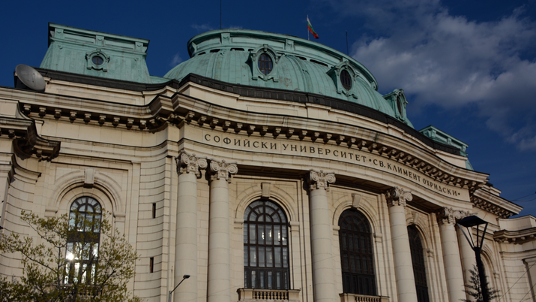Sofia 2024 Call for Papers
The Vorlage of apocalyptic writings attributed to the antediluvian patriarch Enoch, the prophet marking the seventh generation after Adam, was composed (in either Aramaic or Hebrew) no later than 1st cent. BCE, although some of its constituents (e.g. The Astronomical Book, The Book of Watchers) are dated to an earlier period (3rd cent. BCE). Its intellectual offspring survived in multilingual cross-cultural landscapes of parabiblical Judaeo-Christian traditions in three versions. First Enoch is fully attested in Ethiopic, with a number of extant segments in Aramaic from Qumran, as well as Greek passages embedded (predominantly, but not only) in Byzantine chronographic compositions; there are also fragments in Latin. Second Enoch is wholly extant only in Church Slavonic, while Third Enoch is attested exclusively in Hebrew. The scope of data contained in these three Enochic macro-clusters encompasses topoi concerning the origins of the universe and mankind, the invention of writing and the genesis of science, the birth of astronomy and astrology, along with alchemy and related esoteric knowledge. The mainstream epistemological approach followed in scholarly explorations is usually defined by narrow specialization on particular themes, which implies epistemological ramifications. The current Research Unit invites scholars with wide interdisciplinary approaches to Enochic heritage, addressing not only the writings designated by his name, but also their intellectual lineage, thus contextualizing them within the history of ideas spread through the cross-cultural landscape of Judaism, Christianity and Islam. Papers on scribal traditions are welcomed, as well as on iconography and oral traditions.
The role played by the Enochic corpus in transmitting specific aspects of ancient science (e.g. cosmology, calendrical and astronomical knowledge, etc.) within complex multilingual and cross-cultural intellectual environments will be especially encouraged. Of particular interest will also be vernacular oral attestations of Enochic themes and motifs, which so far has been neglected by specialists. Likewise considered will be the impact of Enochic traditions upon heresiological movements and esoteric writings. The three types of corpora diffusing Enochic intellectual heritage will be included — scribal traditions (in a multilingual setting), verbal renditions (including cross-cultural and inter-confessional encounters), and iconography. Potential contributors will be encouraged to focus on First, Second, and Third Enoch within the broad framework of apocalyptic writings, in connection with hitherto understudied iconography and oral traditions. Scholars with broad interdisciplinary interests are invited to participate. Along with specialists from the area of Enochic studies, researchers in related fields are encouraged to contribute papers dealing with allusions and references to Enochic imagery, as attested in all three Abrahamic religions. General studies of apocalyptic texts will also be welcome as potential comparative material, as well as the iconography of Enochic paradigms of cosmology and cosmography.
The current project plans to focus not only on the overarching multilingual metanarratives manifested in the Enochic corpus sensu stricto, but also on related Judaeo-Christian parabiblical traditions from Late Antiquity to the Middle Ages, along with Manichaean and Gnostic texts (e.g. Nag Hammadi Library) and Islamic exegetical writings. Religious art and iconography will also be taken into consideration, with special emphasis on the language of visual arts.
